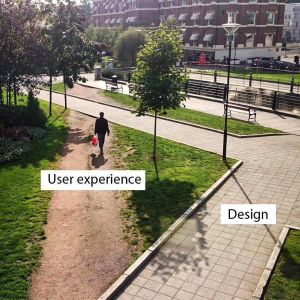Participatory Service
The book Library 2.0: A Guide to Participatory Library Service stood out to me in our readings. It acknowledges the rapid change that libraries take on, and offers a new approach to keep up with the progression of our communities. The idea is participatory service, which is described as the adjustment to our library structures to allow for patrons to design their own desired services.
The structure of this approach is broken up into three steps:
- Reach out to new users: the purpose of this being to expand the information needs, to those in which the library does not already cover.
- Build new services: the purpose of this is to allow for the community members to enact the changes they desire, in some form.
- Respond rapidly to changing customer demands: while patrons enact the changes they desire, the staff is still relied on to respond to these needs.
Pros
The concept of this seems practical, although many pros and cons come to mind. The main benefit of participatory service is that it takes community-focus to a higher level. Modern public libraries strive to be community hubs within their own environment, but by handing over a portion of control to the patrons the library would open up its doors to collaborative progression.
One such library, in Australia, took participatory service to action through social media (Smeaton, 2014). The library opened up channels of communications that allowed patrons to communicate directly with staff and voice their opinions. The staff would then apply these suggestions quickly, within reason. While the essence of this action is simple, it did apply the participatory service approach in an achievable way and it helped the library keep relevant to the community.

Cons
The participatory library service approach in no way has to be all-or-nothing. As we reviewed with the Australian library, even small doses of patron-participation yields good results. One of the issues I had with this concept is less in its results, and more that one of its priorities did not get fully recognized. In Library 2.0, the authors wrote about the need for librarians to shoulder less of the rapid progression that libraries have to keep up with: “Faced with more work and greater demands, library staff are wilting under the intense pressure and demand for efficiency” (Casey, 2007). The structure of participatory service does not change this fate that library staff meet, it instead shifts it: “Responding rapidly to changing customer demands” is one of three ideas within the framework (Casey, 2007). This is just a small critique, however, as I think its an overall positive to be able to shift focus to the community directly.
Reflection
Participatory library service is a forward thinking idea that takes community input into visible action. As libraries are a hub of information for their communities, it is a great idea to have patrons and users be able to give input in valuable ways. As I further approach the information field, I think that I will keep in mind the benefit that comes from user experiences. While you can put a lot of thought into the design of something, a user can quickly find the flaws by the struggles and snags they encounter.

References
Abd Rahim, S. M., Abdullah Sani, M. K. J., & Shuhidan, S. (2024). A conceptual framework for social media engagement in academic library to advocate participatory service towards dynamic learning community. Environment-Behaviour Proceedings Journal, 9(SI18), 3–11. https://doi.org/10.21834/e-bpj.v9iSI18.5459
Casey, M. E., & Savastinuk, L. C. (2007). Library 2.0 : A guide to participatory library service. Information Today.
Smeaton, K., & Davis, K. (2014). Using social media to create a participatory library service: an Australian study. Library and Information Research, 38(117), 54–76. https://doi.org/10.29173/lirg593
